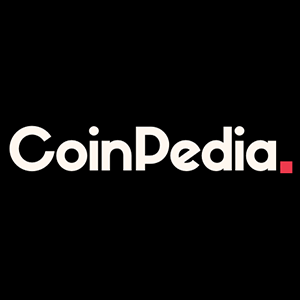Summary Cipher Mining's Q2 earnings show a net loss of $16.2 million but a healthier balance sheet with $122.6 million in cash and $138 million in Bitcoin. The Bitcoin mining industry faces economic challenges post-halving, with Cipher's hash cost currently at $43 per day, making operations unprofitable until rigs are upgraded. Despite a $1 billion market cap and a large Bitcoin stack, Cipher's valuation is mixed. Ongoing risks include dilution and insider selling. Given the current market conditions and risks, I believe CIFR is a hold, with better opportunities potentially found in Bitcoin ETFs. It has been nearly a year since I last covered Cipher Mining ( CIFR ) for Seeking Alpha. As we progress through 2024, it's becoming clear that the Bitcoin ( BTC-USD ) mining space is going through a consolidation. Some firms have been more active than others in acquisitions. Cipher has been an asset acquirer. Today, we find Cipher Mining in a much different financial position than when I last covered the stock. In this update, we'll look at Cipher's Q2 earnings, the health of the industry, recent production figures, and other considerations. Q2 Earnings & Balance Sheet For the quarter ended June, Cipher Mining reported $36.8 million in total revenue. All of which was derived from Bitcoin mining. Q2 revenue was down over 23% sequentially but up 18% year over year. 10-Q (Cipher Mining) Cost of revenue came down slightly both QoQ and YoY to $14.3 million. After COGS, SG&A, Depreciation, and changes in asset values, Cipher's net loss for the quarter comes in at ($16.2) million. The good news for bulls is the balance sheet is in a much healthier position than it was this time last year. Data by YCharts At the end of June, Cipher reported $122.6 million in cash & equivalents, $138 million in Bitcoin, $775.6 million in total assets and just $84.8 million in liabilities. Cipher has a hoard of capital that can be put to use to scale operations in either Bitcoin or HPC services. In August, the company agreed to spend $67.5 million of that capital on a 300 MW facility in Texas that it plans to use for growth. Of course, there's always a catch: Data by YCharts Shares outstanding have grown by over 29% in the last year as Cipher has generally looked to the ATM for capital. Dilution isn't necessarily bad if that dilution is accretive. However, Bitcoin mining is currently a very difficult business and higher BTC prices are needed to justify any planned expansion in that segment from where I sit. Mining Industry Health With BTC having gone essentially nowhere from a price standpoint over the last 6 months, the post-halving economic situation for miners is dubious. I've gone into greater detail in a recent article covering the Valkyrie Bitcoin Miners ETF ( WGMI ) earlier this month. You can read that article for additional insights. For the benefit of this article, all you really need to see is this chart: Mining Hashprice (hashrateindex) This is dollar-denominated hashprice. I'm showing the 5 year trend in that figure. The reason why I like this metric is because it provides a USD number for miner revenue per PH/s per day. At roughly $40 today, that figure is at a 5 year low. This is a direct result of the halving from April. On the conference call, Cipher CEO Tyler Page noted the company's hash cost is about $43 per day. Thus, given current market economics, Cipher Mining can't profitably operate. However, Page mentioned that hash cost will be driven down below $30 following rig upgrades at Odessa. Cipher Production & HODL We can additionally see the impact of the April halving in Cipher Mining's monthly production trend. In the chart below, I'm showing the company's declining monthly BTC production even as Cipher scales exahash capacity: Monthly Production (Cipher, Author's Chart) Since the halving, CIFR is averaging approximately 170 BTC per month in block rewards. The result of this has been a slowing of the growth in the company's BTC stack held in treasury: Monthly HODL (Cipher, Author's Chart) As of August 2024, CIFR holds 2,284 BTC, worth approximately $144 million at a $63k BTC price as of article submission. CIFR has the 6th largest HODL stack of the public miners. Valuation At a hair above $1 billion in market capitalization, CIFR is the 7th largest Bitcoin miner in the public equity market. Three of the companies ahead of CIFR in that ranking have no meaningful position in Bitcoin on the balance sheet. Given CIFR's $144 million stack, there is theoretically more upside for CIFR than some of those peers in a more sustained BTC price rerating to the upside. From a traditional metric standpoint, CIFR's current valuation is mixed: Data by YCharts The company's 5.3x PS ratio is on the lower end compared to large industry peers like TeraWulf ( WULF ) or Marathon Digital ( MARA ). However, all of these companies in the chart above are priced well ahead of Info Tech sector median. Data by YCharts However, on a forward price to earnings multiple, the 11.1 PE offered by CIFR's current price is quite a bit more palatable than each of the other larger BTC miners in the chart above. Info Tech sector median for the metric is 23.5. Given each of these traditional valuation figures, CIFR is probably a "buy." But, I still can't quite get there. Risks: More Dilution & Insider Sales As I alluded earlier, the company's financials are in a far more advantageous position than a year ago. Cipher Mining has raised a large amount of capital to fund growth initiatives in both BTC mining and HPC services. Even with the Fed cutting rates 50 bps in September, it appears as though equity dilution will continue to be the avenue Cipher Mining goes for growth funding. In early September, Cipher Mining announced an automatic shelf offering of up to $600 million. Per the prospectus , the offering will result in 458,304,772 shares of CIFR stock after of 129,688,346 share. Given the 328,616,426 shares at the end of June, the shelf will result in additional dilution of nearly 40%. CIFR Sales (OpenInsider) An additional risk to consider is the insider selling trend over the last few months. Major CIFR owner Bitfury has been selling shares in roughly 1 million share blocks regularly going back to late May. The most recent sale was a 5% reduction in holdings. Investor Takeaways To summarize the overall point today; CIFR shareholders are battling insider selling, more dilution, and rough mining economics for the company's only real revenue segment at this point time. If the price of Bitcoin goes up, it will likely benefit CIFR as well. But the more straightforward way to express that opinion would be to just buy the ETFs instead. HPC services could bear fruit, but that is a very competitive space already with most of CIFR's peers also pivoting to similar business lines. One could possibly argue most of the risks have been priced in given the company's valuation relative to mining peers. But for me personally, I think CIFR is still a hold.















